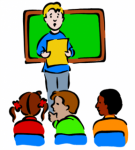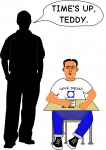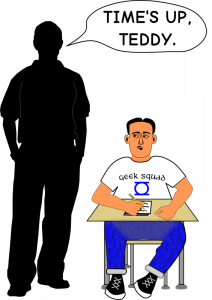
 For many of us, the colder weather has started to arrive and mid-year assessment is in full swing. Teachers are under the pump to produce mid-year reports and grades. The OpenSTEM® Understanding Our World® program aims to take the pressure off teachers by providing for continuous assessment throughout the term. Not only are teachers continually kept appraised of students’ progress towards meeting the learning goals for the term, they can also provide timeous feedback to students, allowing them to reach those goals more effectively. The Understanding Our World® units are also curriculum aligned, and each curriculum strand is matched through each section of the model answer to the assessment guide, which provides a grading schedule and vocabulary to describe each student’s progress through the core curriculum areas. Thus, teachers need only to collate this information for each student in order to populate the reports.
For many of us, the colder weather has started to arrive and mid-year assessment is in full swing. Teachers are under the pump to produce mid-year reports and grades. The OpenSTEM® Understanding Our World® program aims to take the pressure off teachers by providing for continuous assessment throughout the term. Not only are teachers continually kept appraised of students’ progress towards meeting the learning goals for the term, they can also provide timeous feedback to students, allowing them to reach those goals more effectively. The Understanding Our World® units are also curriculum aligned, and each curriculum strand is matched through each section of the model answer to the assessment guide, which provides a grading schedule and vocabulary to describe each student’s progress through the core curriculum areas. Thus, teachers need only to collate this information for each student in order to populate the reports.
 Students in year levels from Foundation (Kindy/Prep) to Year 3 work through curriculum-aligned sections of work throughout the term and are assessed through a variety of interactions, which include students’ verbal and written responses, as well as drawings and craft projects completed as part of the term work. Students in Years 4 to 6 usually have one main project or summative assessment piece for the term. However, the student workbook provided with each unit is structured to step students through the formative process of completing this work over several weeks, allowing teachers to keep track of their progress and provide regular feedback. The assessment guide provided with each unit, guides teachers on how to assess the assessment piece (as well as the rest of the term work, including the student workbook), as well as providing a marking rubric and vocabularies for students’ achievements from A to E.
Students in year levels from Foundation (Kindy/Prep) to Year 3 work through curriculum-aligned sections of work throughout the term and are assessed through a variety of interactions, which include students’ verbal and written responses, as well as drawings and craft projects completed as part of the term work. Students in Years 4 to 6 usually have one main project or summative assessment piece for the term. However, the student workbook provided with each unit is structured to step students through the formative process of completing this work over several weeks, allowing teachers to keep track of their progress and provide regular feedback. The assessment guide provided with each unit, guides teachers on how to assess the assessment piece (as well as the rest of the term work, including the student workbook), as well as providing a marking rubric and vocabularies for students’ achievements from A to E.
 Continuous assessment is widely recognised internationally as promoting “inclusive and equitable quality education”. A UNESCO report from August 2017 describes the advantages of continuous assessment for teachers, students, parents and other “education actors”. It includes statistics on how it has improved student engagement, confidence and performance, whilst improving the teaching-learning process. The impact of the shift to continuous assessment is particularly marked when applied to lower performing schools and students, where performance increases significantly once continuous assessment is used. Studies from countries in Africa, including Zambia, have shown that students’ performance and engagement were greatly increased after continuous assessment was introduced. On a global scale, continuous assessment has been shown to improve outcomes for students, parents, teachers and education systems as a whole, especially in the vital area of fostering critical 21st Century competencies. Continuous assessment has been shown to “improve overall quality and equity in education delivery and outcomes”. Feedback – from teachers to students, from students to each other, from teachers to parents and also within the education system itself, is a critical component of this success.
Continuous assessment is widely recognised internationally as promoting “inclusive and equitable quality education”. A UNESCO report from August 2017 describes the advantages of continuous assessment for teachers, students, parents and other “education actors”. It includes statistics on how it has improved student engagement, confidence and performance, whilst improving the teaching-learning process. The impact of the shift to continuous assessment is particularly marked when applied to lower performing schools and students, where performance increases significantly once continuous assessment is used. Studies from countries in Africa, including Zambia, have shown that students’ performance and engagement were greatly increased after continuous assessment was introduced. On a global scale, continuous assessment has been shown to improve outcomes for students, parents, teachers and education systems as a whole, especially in the vital area of fostering critical 21st Century competencies. Continuous assessment has been shown to “improve overall quality and equity in education delivery and outcomes”. Feedback – from teachers to students, from students to each other, from teachers to parents and also within the education system itself, is a critical component of this success.
 The authors of the UNESCO report warn that “high-stakes, large-scale, annual and multi-annual instruments” of assessment “threatens education” and “continues to favour information over knowledge, and mechanical skill over practical application”. Continuous assessment is also in line with the suggestions in the Gonski 2.0 report. It is perhaps apposite to mention that the Queensland government is currently undertaking a review of NAPLAN and is looking for survey responses. Click on the link provided to take part.
The authors of the UNESCO report warn that “high-stakes, large-scale, annual and multi-annual instruments” of assessment “threatens education” and “continues to favour information over knowledge, and mechanical skill over practical application”. Continuous assessment is also in line with the suggestions in the Gonski 2.0 report. It is perhaps apposite to mention that the Queensland government is currently undertaking a review of NAPLAN and is looking for survey responses. Click on the link provided to take part.


 It is the time of year when the thoughts of teachers of students in years 3, 5, 7 and 9 turn (not so) lightly to NAPLAN. I’m sure many of you are aware of the controversial
It is the time of year when the thoughts of teachers of students in years 3, 5, 7 and 9 turn (not so) lightly to NAPLAN. I’m sure many of you are aware of the controversial  Perelman had been asked to review the planned robot-marking of NAPLAN essays in October 2017, and his criticism was so harsh that the plan was scrapped. ACARA seems to be taking Perelman’s concerns seriously. ACARA have stated that they believe that teachers focus on building and expanding the vocabulary of students and students should be able to use this vocabulary in “meaningful, constructive ways”. It seems certain that ACARA will re-evaluate the marking of NAPLAN essays in the face of these criticisms.
Perelman had been asked to review the planned robot-marking of NAPLAN essays in October 2017, and his criticism was so harsh that the plan was scrapped. ACARA seems to be taking Perelman’s concerns seriously. ACARA have stated that they believe that teachers focus on building and expanding the vocabulary of students and students should be able to use this vocabulary in “meaningful, constructive ways”. It seems certain that ACARA will re-evaluate the marking of NAPLAN essays in the face of these criticisms. Teachers have already reported to us that they find these
Teachers have already reported to us that they find these
I played this game 3 or 4 times with my grade 4 son. He said he would enjoy it more…
Brad